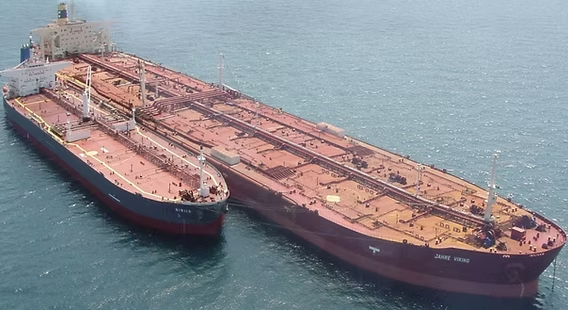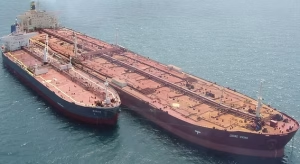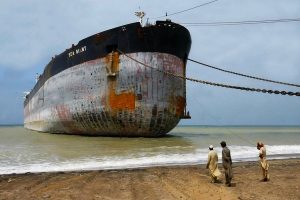05/05/2025
While Seawise Giant’s massive size made her majestic, it also posed maneuvering challenges during its navigation through oceans and seas.
The Seawise Giant—once the largest ship ever built—was a marvel of maritime engineering. At 458 meters (1,500 feet) long, it dwarfed the Empire State Building and Eiffel Tower in sheer scale. Yet, its colossal size brought both awe and operational challenges. Over its 30-year journey, the ship survived war, missile attacks, multiple name changes, and ownership shifts—including a stint under Iranian control—before meeting its end in an Indian scrapyard.
The Seawise Giant, the largest ship ever built at 458 meters, began its journey in 1979 after Japanese shipbuilders completed it for a Greek tycoon who later backed out. Hong Kong magnate C.Y. Tung acquired and expanded it, boosting its capacity to over 600,000 tonnes. Despite its record-breaking size, maneuvering the vessel was a challenge—requiring two miles to turn and five miles to stop.
During the Iran-Iraq War in 1988, the ship, then carrying Iranian oil, was struck by Iraqi missiles and nearly destroyed. Salvaged and rebuilt with 3,700 tonnes of new steel, it was renamed “Happy Giant” before being sold to Norwegian owners as “Jahre Viking.” By the 2000s, its massive size made it impractical, leading to its final role as a floating oil storage unit in Qatar. Renamed “Knock Nevis,” it was eventually scrapped in India in 2010, ending the era of the world’s largest ship. Its legacy lives on through its 36-tonne anchor, now displayed in Hong Kong.
Credit: https://www.virtuemarine.nl/post/seawise-giant-the-colossal-supertanker-of-the-seas
Birth of a Giant: Construction and Early Ownership
The Seawise Giant was ordered by a Greek shipping magnate but was abandoned before completion. Built by Japan’s Sumitomo Heavy Industries in 1979, it sat idle until Hong Kong tycoon C.Y. Tung (founder of Orient Overseas Container Line) purchased and expanded it.
Key Modifications:
-
Lengthened to 458 meters (1,500 feet)
-
Capacity increased by 140,000 tonnes
-
Final weight: 600,000+ deadweight tonnes (DWT)
This made it the largest ship ever constructed, surpassing even the Titanic in size.
Engineering Marvel, Navigational Nightmare
While the Seawise Giant was an engineering triumph, its size made navigation difficult:
Operational Challenges:
✔ Turning radius: 2 miles (3.2 km)
✔ Stopping distance: 5 miles (8 km) from full speed (16.5 knots)
✔ Too large for the Suez & Panama Canals
✔ Limited port access due to depth restrictions
Despite these hurdles, it became a crucial crude oil transporter between the U.S. and the Middle East in the 1980s.
War, Fire, and Near-Destruction: The Iran-Iraq Attack
In May 1988, the Seawise Giant was caught in the Iran-Iraq War.
What Happened?
-
The ship was carrying Iranian crude oil (owned by Iran at the time)
-
Iraqi fighter jets attacked it near Larak Island
-
Two Exocet missiles struck, igniting the oil cargo
-
The vessel was left half-sunken and severely damaged
Many believed it was beyond repair, but a Norwegian salvage company (Norman International) rescued it.
Rebirth: Salvage, Repairs, and New Ownership
After the war, the Seawise Giant was:
✔ Raised and towed to Singapore
✔ Rebuilt with 3,700 tonnes of new steel
✔ Renamed “Happy Giant” (1991)
Later, Norwegian magnate Jørgen Jahre bought it for $39 million, renaming it “Jahre Viking.”
Credit: https://www.aukevisser.nl/supertankers/id58.htm
Final Years: Floating Storage and Scrapping
By the 2000s, the ship’s size made it economically unviable:
- High fuel consumption
- Too big for modern ports
Final Roles & Fate:
- 2004: Converted into a floating storage unit (renamed “Knock Nevis”) in Qatar’s Al Shaheen Oil Field
- 2009: Sold for scrap, renamed “Mont”
- 2010: Dismantled in Alang, India (took over a year)
Today, its 36-tonne anchor is displayed at the Hong Kong Maritime Museum.
Conclusion: The Legacy of the Seawise Giant
The Seawise Giant was more than just a ship—it was a floating legend. From surviving missile strikes to serving as a strategic oil carrier for Iran, its journey was as dramatic as its size. Though scrapped, its legacy lives on as a testament to human ambition and maritime history.



